-
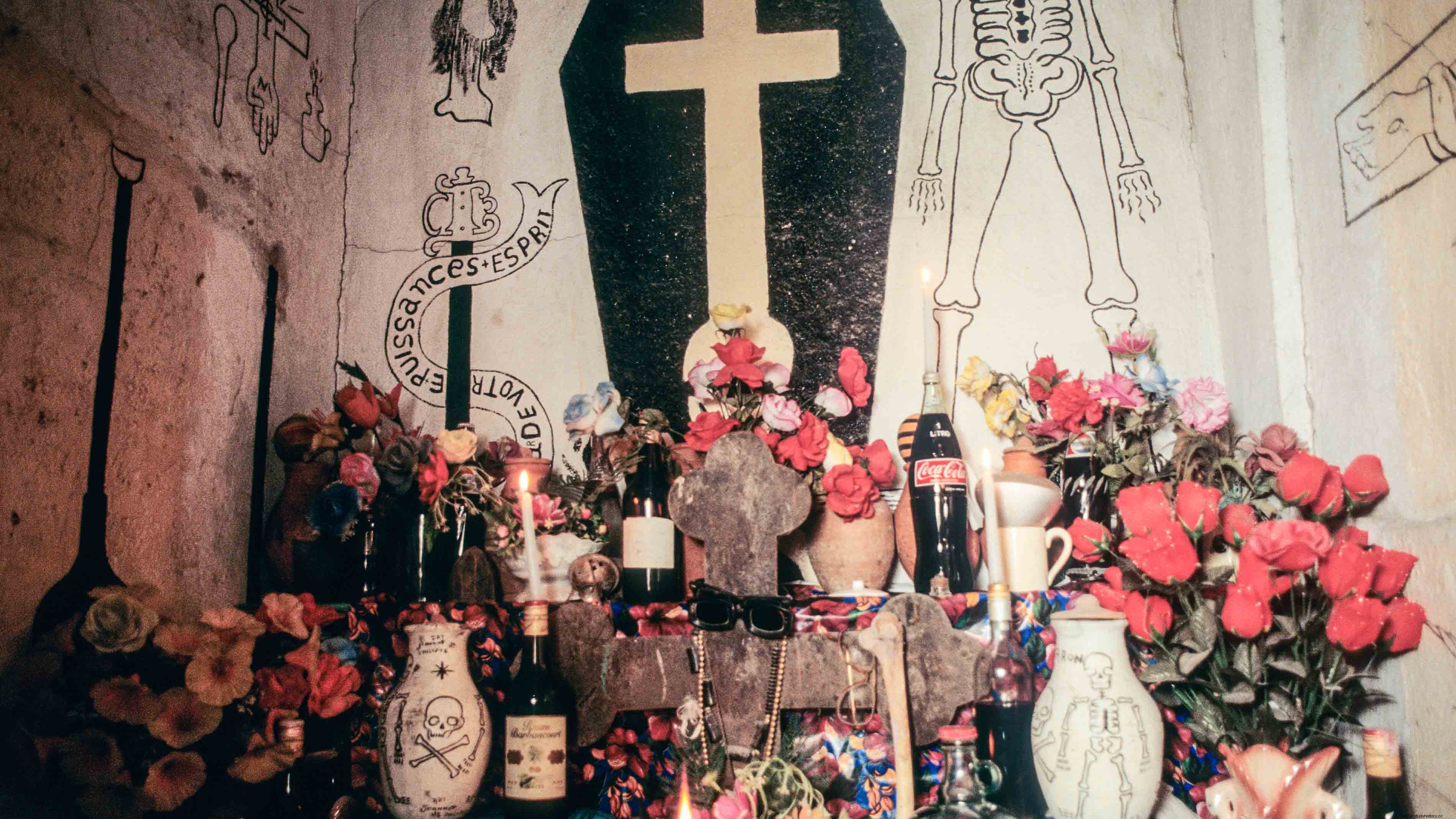
- https://adventure.com/
Be honest:is that the very first thing you think of when you hear the word "Voodoo"? Is it a scary ragdoll, for people to stick needles in needles? Is it a mysterious man, wearing a tailcoat and a top hat, with a skull painted in the face? Or maybe it's some kind of witch that you've heard of, like turning the picture on someone to give them a headache?
That's fine, you can admit that. After all, you - and most people who do not practice Vodou, including myself! - probably grew up watching and reading content where these stereotypes were the only elements that were promoted on the topic. So you are forgiven.
As you can probably guess at this point, the same stereotypes are completely - or partially, at least - wrong and in recent years have agreed to charge the word "voodoo" with a dark, exotic and evocative force.
But what exactly is Vodou?
-
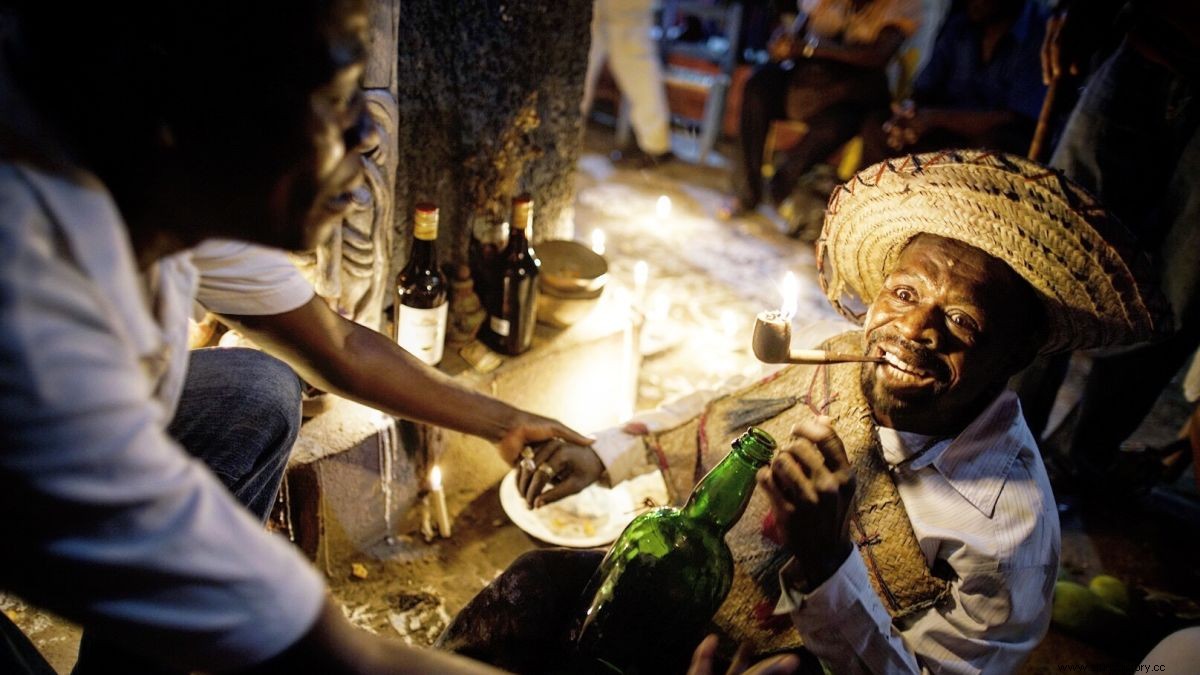
- https://edition.cnn.com/
Despite all the stories and prejudices that surround it, Vodou (also spelled Voodoo, Vodun, Voudou or French Vaudou) is a religion, one that has deep and ancient roots in the African empire that was once called Dahomey - known today as Benin. The name itself originates from the same ancient kingdom, and can be translated as "spirit" or "deity".
Vodou is rich in traditions, but not only refers to religious practice, but also includes philosophy, justice and medicine.
But what is the main principle? Well, according to Vodou, all is spirit:Humans are spirits living in the visible world, while the invisible world is home to lwa (literally "spirits") or mystè ("mysteries") or again anvizib ("the invisible)") These exist as a link between humans and Bondye, the creator god, a distant being who is beyond human understanding and direct interaction.
It is in fact through lwa that Bondye can manifest his will and have an actual impact on people's lives. This creates Vodou's primary goal and activity for practitioners:sevi lwa, to "serve the spirits", or in other words to perform rituals and pray to ask what men have always asked about religion - health, protection and favor.
Anthropology:Diving deeper into the origin
-
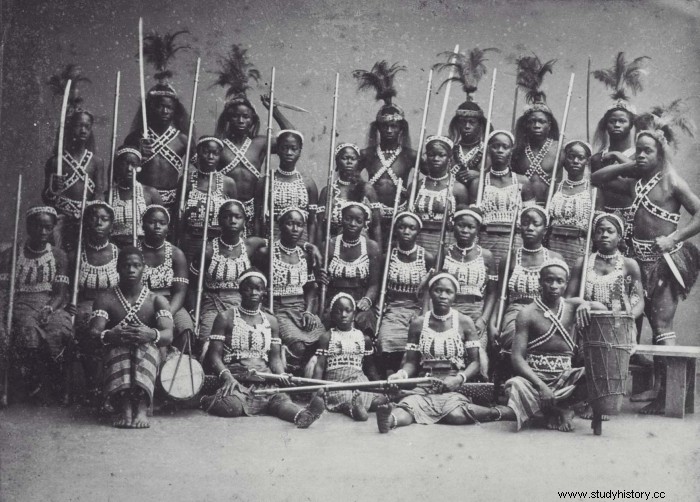
- https://www.blackhistorymonth.org.uk/
Religion is only part of the cultural experience that the Fon people could take with them when between the 16th and 17th century they became slaves of the Spanish Empire and brought to Hispaniola - modern Haiti. And that is only the beginning of Vodou and its history, which originates from the Fon tradition, but must mix with Roman Catholicism and survive in secret for many years, before they become what it is today.
But how could we be sure? After all, the number of African tribes brought to New World plantations was quite high:Senegalese, Angolan, Bambara, Mahi, Fon, Naho and many others. Although at times deeply connected, it is very unlikely that the whole of Africa contributed to weaving this rug, and it is through the available historical evidence that we have that we can limit Vodou's area of origin down to the Gulf of Benin. Here the people of the kingdom of Dahomey were very dense and offered an inexhaustible source of men to the Europeans:the slave trade soon became a national industry in the once prosperous empire.
Thus, tens of thousands of natives were taken from their homeland and brought to work in the sugar plantations in the Caribbean. Their only luggage? Culture and traditions were passed down orally from generation to generation, which slowly became their only hope in their new life of hard work.
From Spanish domain to French colony
Then, in 1697, Spain ceded the western part of Hispaniola to France, which renamed it Saint-Domingue:plantations increased from 18 to 120 and consequently the slave trade escalated dramatically. Moreover, since Catholicism was the official religion of the newly established French colony, African slaves began to undergo forced baptism. This is when Vodou begins to emerge, becoming a symbol of resistance and unity. Contrary to official laws, African society actually began to organize secret gatherings during the night, where they would pray, dance and sing as required by the Vodou religion, no matter how exhausted they were or the punishments they would suffer if captured.
And thanks to this man's determination and bravery, Vodou has survived through the ages, an echo of hope through oppression and rebellion. The practice was punished by the Republic of Haiti in 1835, and again, in 1941, the newly elected President Élie Lescot campaigned against it, imprisoning Vodou priests and priestesses and burning artifacts and temples. Such is the fear of the unknown or, most likely, unity.
We have to wait until 1972, 31 years later, before Vodou can be practiced freely in Haiti, and it is not until 2003 that it is finally recognized as an official religion.
1,000 spirits and counts
-
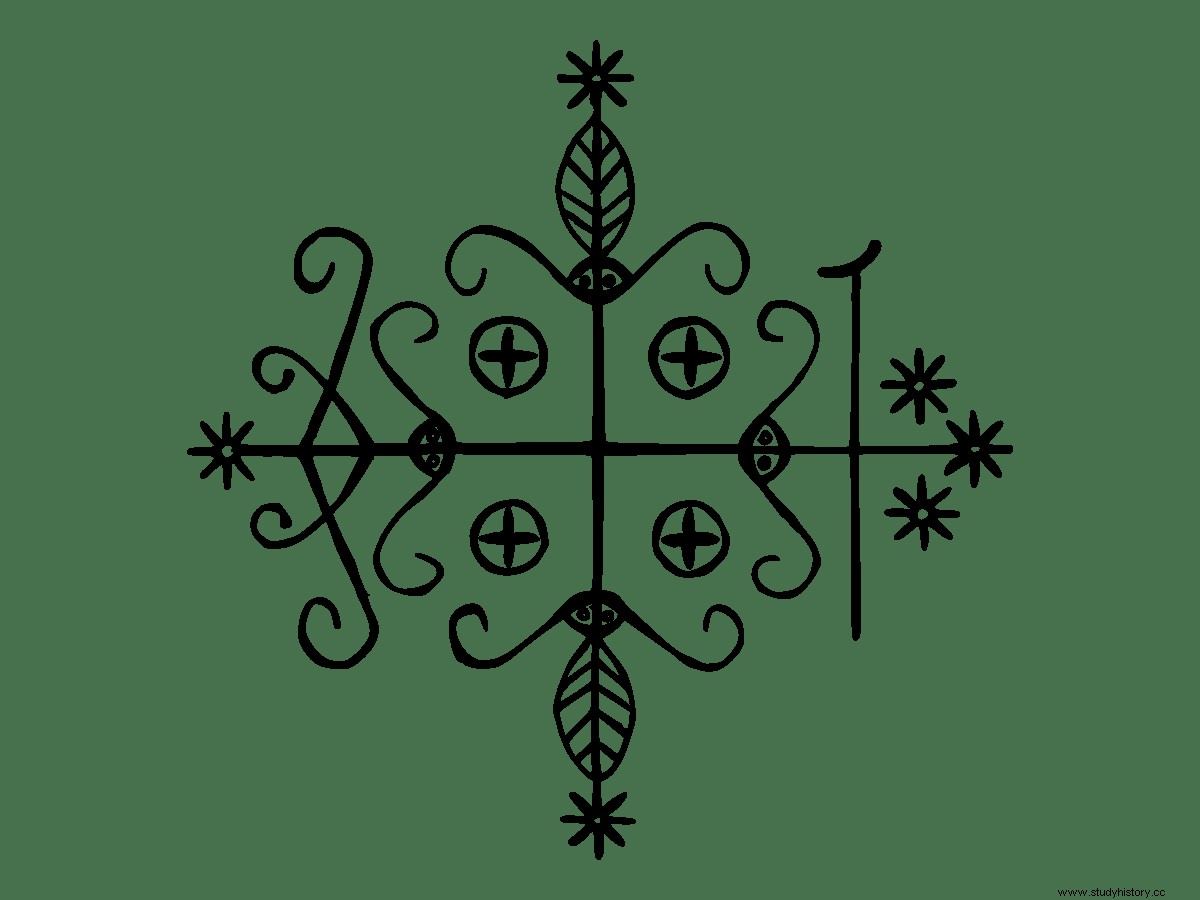
- https://en.wikipedia.org/
There is something extraordinary about Vodou's journey through the centuries and the continents, an incredible proof of the legacy passed down through the generations. And what a legacy!
As we already mentioned, Vodou actually recognizes Bondye - from the French bon dieu, which means "good god" - as the creator god, but mostly serves lwa (or loa) to establish a connection with him. Simple, right?
Still, you may not realize that Vodou counts more than 1,000 lwa, grouped into at least 17 pantheons (called nanchons). This is where the situation becomes a little more complicated, but should also give you a better understanding of how incredible the effort was to all those who cared and gave up this belief.
In terms of both size and significance, there are two main pantheons in Vodou:Rada Lwa and Petwo Lwa. It can still be quite difficult to separate the two nations from each other - since the two groups can overlap and some lwa are present in both - but the easiest way is to separate them, above all, through their general character.
Rada lwa is associated with "water" and a more "cool" energy, which indicates how their behavior is generally benevolent and sweet-hearted — although they may become vindictive if offended or dissatisfied.
On the other hand, Petwo lwa is associated with "fire" and "hot" energy, a perfect reminder of their powerful, violent and often dangerous attitude. Nevertheless, they can also prove to be generous and very protective of the living.
As you can imagine, just like in the Greek pantheon, the deities in Vodou are really far from perfect, drawing an interesting but also very real picture for each of the revered lavas.
Some of the most important lwa
The first one we should probably talk about is Legba, who is generally known even by non-practitioners. And for good reasons! He is in fact the master and guardian of intersections and doors:anyone who wants to call a lwa must contact him first, as he is the one who will open the gates to the spirit world. No lwa dares to show up without Legba's approval, and shows us how powerful and important he is. Despite this, however, he is usually portrayed as an old man, often with injuries or deformities. He walks around dressed in rags and straw hats, walks with his cane and a cloth bag to carry his offerings. He is generally benevolent and much loved by the Vodou community, who would refer to him as "Papa Legba".
Damballah is another important lwa of the Vodou tradition:he is associated with creation and is thus seen as the father of the world. He rules over mind and intellect, and is also responsible for the balance of the world, and encourages peace and harmony.
Like his wife, Ayida-Weddo, he is depicted as a serpent, and together they represent the power and eternity of life, making them two of the wisest lavas in the pantheons.
Erzulie Dantor is depicted as the only non-black loa, draped in luxurious robes with a crown on her head. Dantor is a mother figure and protector of children, in addition to being a symbol of romance and love. Many women who have been abused will call on her for her strong protective power, which she shows through her aggressive and wild side.
She has several different roles:the goddess of love, health, beauty and wealth, as well as the goddess of jealousy, revenge and disagreement.
More ancient than any other loa, Marassa Jumeaux is actually two people. These twin children represent the mysteries of both the earth and the sky, as well as the conflict and contradictions in both. They are neither male nor female, but are both sexes at the same time. By representing both humans and divine spirits, they also hold on to the universe's secrets and knowledge of astrology and astronomy.
In Voodoo ceremonies, they are never invoked through possession, but they are important enough to usually be invoked immediately after Papa Legba. Marassa Jumeaux can help people who seek truth, justice and reason.
Other important lwa are Agwé, the sovereign of the sea, ships and sailors; Ogun, ruler of politics, hunting, war and iron, seen as a symbol or strength and power; Locomotives, trees and vegetation in general; Ayizan, the marketplace and protector of merchants.
Wait… Possession?
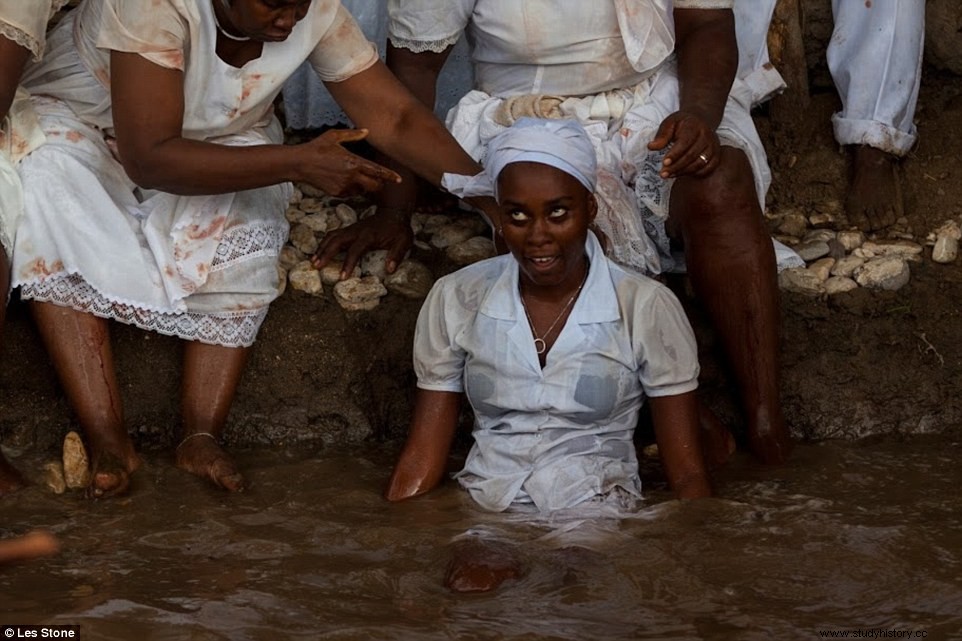
Summary:we have Vodou, an ancient religion that comes from the intertwining of African faith and Roman Catholicism. We have many pantheons of lwa, counting hundreds of spirits, each with its own characteristics and attitude.
But how does Vodou work, exactly? How do practitioners earn the spirits to ask for services? Well, unfortunately, there is no specific answer, as Vodou does not have a single leader or a specific spokesperson. This means that rituals and ceremonies often vary throughout Haiti and can blend in with traditions from different backgrounds. They can also vary from family to family since, as we have already discovered, Vodou has mostly been sent orally. In cities, however, having a congregation consisting of a priest or a priestess (ie a manbo or an oungan), "children of spirits" and ritual drummers can give life to more "formal" ceremonies.
It usually starts with a gathering:practitioners meet outdoors or most often inside an ounfò - a Vodou temple. In the center is a potomitan (literally "pillar in the middle"), which connects the ground to the roof and is usually decorated with a beautiful spiral snake. it also serves as a focal point for ritualistic dances.
It is in fact through these dances - along with songs, prayers, drawing of vèvè (spiritual drawings) and drumming - that the lvas are invited to join the living in the ceremony and accept the offer that the manbo or ounganen has sacrificed for them - usually a sanctified chicken or another animal.
However, this is where things get more interesting:since lwa is not part of our world, but belonging Instead of the invisible, the only way they can communicate directly with people is to take possession of one of the participants - usually the person leading the ritual . It is then through this person, who "drives with lwa", that the spirit can reach out to the living and will often be asked for advice or help with problems-mostly health-related.
Is it black magic, then?
-
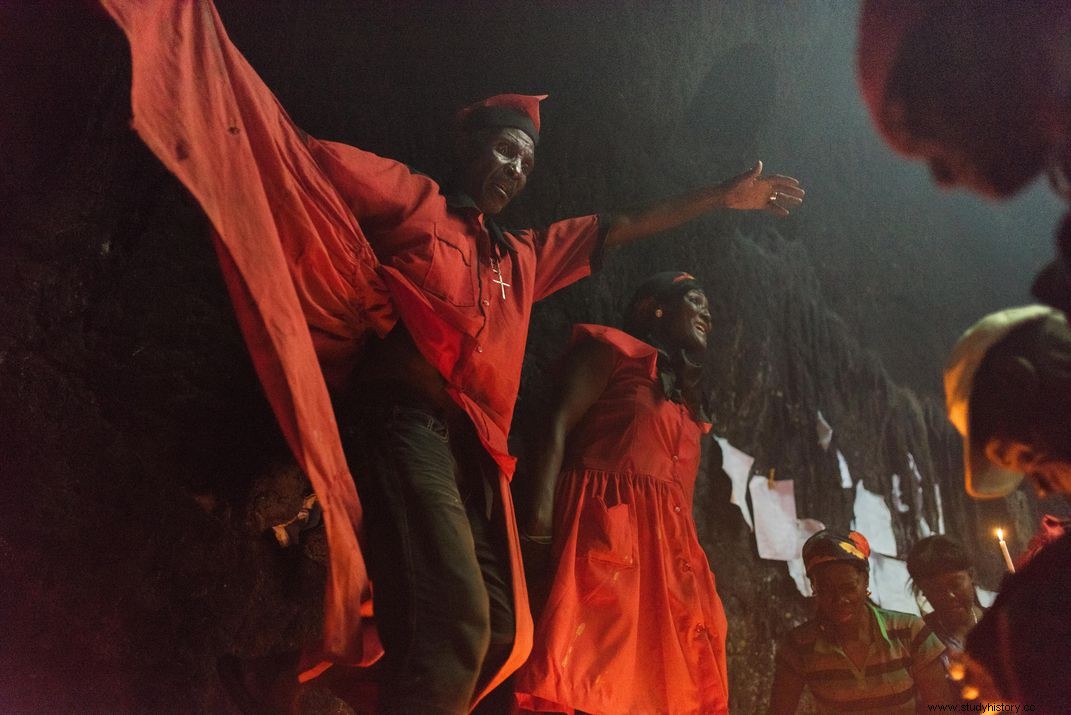
- https://www.smithsonianmag.com/
Well, you should answer that question now, my dear children of the 21st century. Keep the first images you had in mind:the puppet that is stuck, the scary, evil man with a painted face, the human victims, all the dark, evil ideas that modern zombie movies and popular books have instilled in our general knowledge.
Now take the other pictures that this article has hopefully conjured up for you:abducted men and women, who gathered at night to ask for help from their protectors; colorful dances and old melodies sung in chorus around a colorful pillar; benevolent gods, who will become very human if they are offended or wronged.
And so, tell me? What is Vodou? An exotic taboo? Or an old story to tell?
